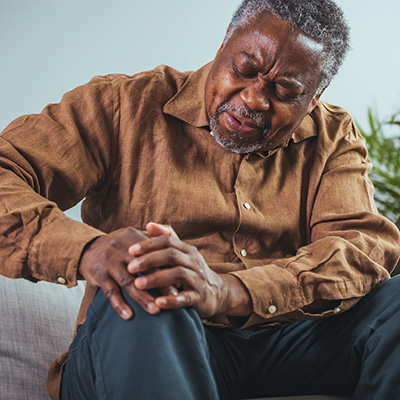5 Ways to Reduce Joint Pain and Stiffness This Winter Season
Posted January 30, 2023 by Joseph Rabe, M.D.

Do frigid temperatures cause slow, achy joints that make it difficult for you to get moving? It’s not just your imagination. People living with joint pain related to conditions, such as: arthritis, rheumatoid arthritis, lupus or fibromyalgia, often report when temperatures drop, their joint pain acts up.
It’s true, cold weather causes muscles to tense, which can lead to less mobility and flexibility in the joints. Some studies also associate joint pain with changes in barometric pressure. These changes can trigger tendons, muscles and the surrounding tissue to expand and cause decreased mobility, stiffness and pain.
But while the exact cause is unclear, the fact remains that weather-related joint pain that some people feel is still very real. If you get stiff, achy joints in the wintertime, follow Summa Health’s 5 tips to help bring you relief … until we can finally welcome spring once again.
Keep your body temperature consistent: Dress in layers when you go out and make sure to cover areas that are prone to flare-ups. Consider thermal underwear to protect your hips and knees, and insulated gloves to keep your hands and fingers warm. Also, don’t forget warm boots with good tread to prevent falls.
While in the house, keep yourself warm and cozy by wearing slippers, using an electric blanket and even taking a warm bath. Warm water can help soothe aching joints, as well as the muscles surrounding them.
Keep moving: Regular exercise builds up muscle and bone strength to help protect your joints. It also promotes better mobility by keeping your joints and muscles from becoming too stiff. Unfortunately, inactivity leads to decreased range of motion and even more joint pain.
Yoga, swimming and an exercise bike are great workouts that are easy on the joints. If you do exercise outdoors, be sure to dress appropriately and stretch afterwards.
Maintain your weight: The holidays can bring about many indulgences, plus when it’s cold and blustery outside, the couch and warm blanket beckon. Pair these situations together, and you get weight gain. Even a small amount of weight gain, just five pounds, puts added stress on already painful joints.
It’s important to eat a balanced diet chock full of fruits and veggies, and lean proteins to ward off weight gain and promote joint health. Not only does it help keep your weight in check, but it also ensures your joints are getting the vitamins and minerals they need to stay strong.
If you’re experiencing achy joints, try incorporating foods that naturally contain anti-inflammatory properties, such as avocado, nuts, berries, garlic and oily fish, to help keep pain at bay. In addition, avoid unhealthy choices, such as processed foods, which can cause inflammation.
Stay hydrated: Hydration is important, especially during the dry winter months. Remember, just because you’re not hot and sweaty doesn’t mean that you’re not losing fluids. Dry air can cause you to lose moisture through your skin and breath. Dehydration can increase sensitivity to aches and pain, reduce joint fluid and lubrication, and cause muscle cramping.
Be sure to drink plenty of fluids, including water, naturally flavored water or fruit juice. You can even get your hydration from warm soup or flavored teas.
Be proactive: If you do start to feel joint pain, apply heating pads to help relax your muscles. Just be mindful and avoid prolonged use of heating pads, which can cause injury or burns.
You also can take pain relievers or anti-inflammatories to ease your symptoms. Talk to your doctor about which pain relievers are right for you and your condition.
Winter’s frigid temps are a fact of life, especially in Northeast Ohio. But, there are things you can do to reduce the discomfort brought on by the cold to keep you moving throughout the season.
If you’re struggling with chronic joint pain and swelling, contact Summa Health’s orthopedic specialists at 330.375.3000 or schedule an appointment online.
About the Author
Vitality eNews Sign Up
Receive the Summa Health eNewsletter for the latest health tips, advice and updates.


